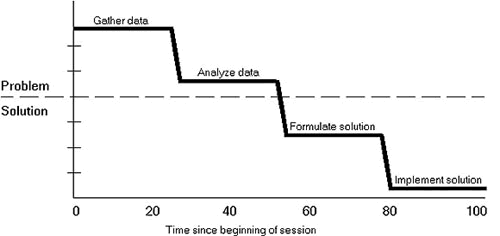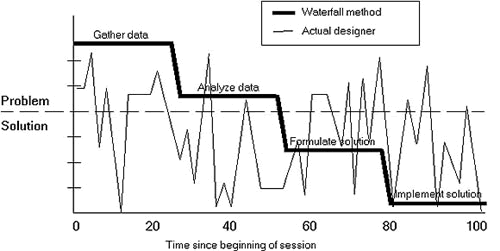| Tuesday, June 19, 2007 |
| Waterfalls and Chaos |
Johnnie Moore used it as a couple of his slides at Reboot, and described it further in an old blog post, based on a paper on wicked problems. We're talking about how things are supposed to happen in somebody's neat mental model versus how it actually happens. The authors put up this diagram. It shows the traditional view of a problem solving process. This should be pretty familiar to any kind of consultant. It shows four stages of problem solving: gather data, analyze data, formulate solution, implement solution. Apparently, this is called the waterfall model of problem-solving, where we move graciously from the area of looking at the problem to that of working out the answer.And they go ahead and try it with more different people, who don't fit the neat waterfall model either, and who don't at all match each other's patterns either. And we were talking about skilled, successful designers there. The conclusion is of course along the lines of realizing that in the real world real people do something very different from what they're supposed to according to neat diagrams. They probably couldn't do it exactly like the diagram, or if they did, they would be very ineffective. Seen from the perspective of the people who like neat diagrams, the actual behavior seems chaotic. But it is productive chaos, and not really chaos. It is a different kind of order. It is often not wise to try to impose rigid one or two-dimensional patterns on problems and solutions and people and organizations that really have many more dimensions to them. You can simplify things that are complicated, but over-simplifying functioning complexity is unwise. [ Organization | 2007-06-19 22:22 | 5 comments | PermaLink ] More > |

